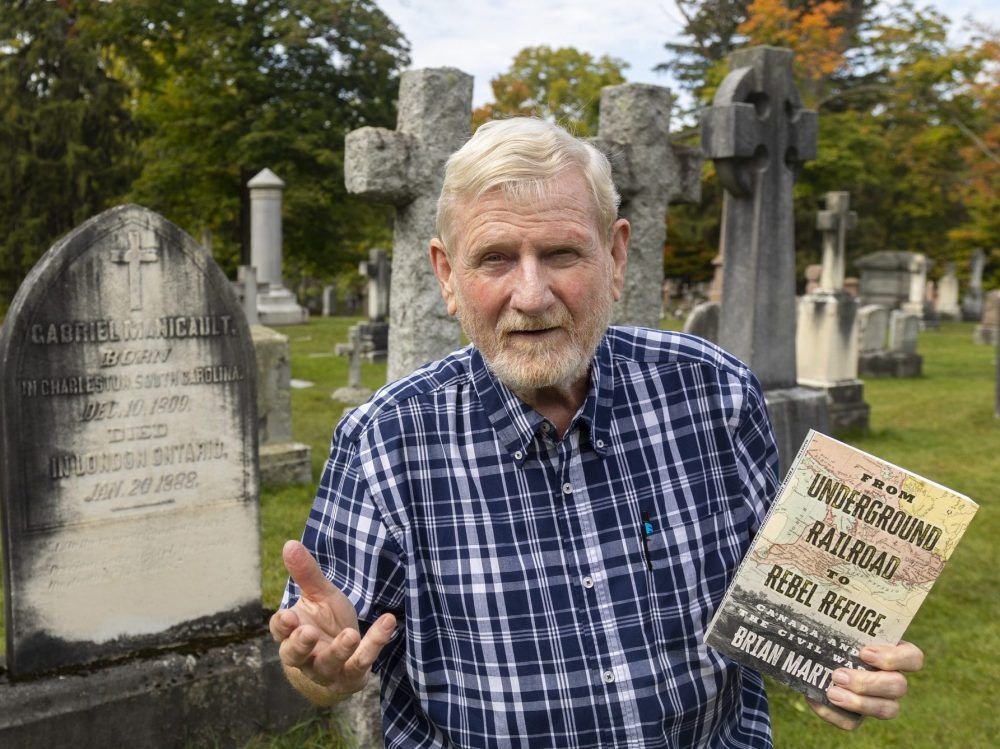Reviews and recommendations are unbiased and products are independently selected. Postmedia may earn an affiliate commission on purchases made through links on this page.
London Author’s New Book Reveals Fascinating Canadian Connections to the American Civil War

Most Canadians are familiar with the Underground Railroad that brought slaves across the border before and during the American Civil War.
Content of the article
Most Canadians are familiar with the Underground Railroad that brought slaves across the border before and during the American Civil War.
Advertisement 2
Content of the article
But Canada’s role in the conflict that killed more than 600,000 people was much darker and much broader than that of providing refuge for slaves: it was also a refuge for slave owners, draft dodgers and the Ku Klux Klan; fertile ground for bounty hunters and recruiters on both sides of the war; and a warehouse for arms dealers and suppliers, all closely watched by spies.
Content of the article
London-based author and journalist Brian ‘Chip’ Martin’s latest book, From Underground Railroad to Rebel Refuge: Canada and the Civil War (ECW Press, paperback $24.95) reveals the extent of this country in the American Civil War.
“Nobody really put it all together before,” Martin said. “We had front row seats and played a role in this war that most Canadians know nothing about. In London, we sold horses, supplies and weapons to both sides. Spies were everywhere. We prospered and when the war ended our economy sank. It’s fascinating and London was in the middle of a lot of intriguing things.
Advertisement 3
Content of the article
For Martin, the plot was sparked by a conversation with London history buff Joe O’Neil, owner of O’Neil’s Funeral Home. He has long studied and documented the history of this city and told Martin about Confederate soldiers buried in a London cemetery, Woodland Cemetery, not to mention those who fought on the Union side.
“Seeing these tombstones of people (Gabriel and Ann Manigault from South Carolina) from the southern United States who died here, who were slave owners and Confederate soldiers before the war, nestled next to the plot of the Labatt family, plots of the Becher and Harris family, I could not understand why they came here,” Martin said. “Some came here before, during and after the war, they fled here. didn’t like the prospects of life in the south and feared there would be a return on investment and I believe they came here to escape.
Advertisement 4
Content of the article
Gabriel Manigault was a Colonel in the Confederate Army and participated in the Battle of Fort Sumter which started the American Civil War in 1861.
There are many notable stories found in Martin’s book, including:
- Among the first Canadians killed in the Civil War was Jasper Wolverton, a teammate on the Union side with three of his brothers, who was killed in 1861 and is buried in the small community east of Woodstock that bears the name of family ;
- Kincardine physician Solomon Secord moved to Georgia just before the war, served as a surgeon in the Confederate army at Gettysburg, where he was wounded and captured, returning to Kincardine after the war and becoming a prominent member of the community. A monument to his memory erected by friends after his death is the only monument in Canada dedicated to a Canadian who served in the South;
- London’s Tecumseh House Hotel was popular with southerners, including some families who had fled here and spies, while northern spies and shoppers preferred the nearby Arkell Hotel, which had extensive stables for horses they bought;
- Dr. J. Rufus Bratton, a Confederate Army surgeon who, as a leading member of the Ku Klux Klan, was implicated and charged with terrorism and murder for his activities and fled to Canada, settling in London. He was kidnapped in London and brought back to the United States for trial, which sparked a diplomatic row between the United States and Canada over Bratton’s release;
- When the Civil War broke out, 70 members of Dresden’s black farming community where escaped slaves had settled joined the Union Army;
Advertisement 5
Content of the article
Martin’s research reveals that over 40,000 Americans came to Canada during the war “but I don’t know how many stayed after the war.” Twenty thousand people from Canada, including the London area, went south to serve on both sides.
Martin’s book explores what happened before, during and after the Civil War not only in the London area, but in southwestern Ontario, the Niagara region, Toronto, Montreal and points in south of the border.
“My book is full of stories about all kinds of interesting characters,” Martin said. “I have tried to tell their stories and I think this book will be an eye opener.”
Martin is a prolific author. This is his 10th non-fiction book. His first, Buxbaum: A Murderous Affair, told the story of Helmuth Buxbaum, a millionaire retirement home operator, womanizer and wife killer. It was a bestseller published in 1986.
Advertising 6
Content of the article
This was followed by Never Enough: The Remarkable Frauds of Julius Melnitzer (1993), Ernie’s Gold: A Prospector’s Tale (2011), Baseball’s Creation Myth: Adam Ford, Abner Graves and the Cooperstown Story, (2013), The Tecumsehs of the International Association: Canada’s First Major League Baseball Champions (2015), Pud Galvin: Baseball’s First 300-Game Winner (2016), The Detroit Wolverines: The Rise and Wreck of a National League Champion (2018), The Man Who Made Babe Ruth: Brother Matthias of St. Mary’s School (2020) and Barney Dreyfuss: Pittsburgh’s Baseball Titan (2021), finalist for an award from the Society for American Baseball Research.
“Writing keeps me out of trouble,” said Martin, an award-winning columnist and journalist at the London Free Press for 41 years, who retired in 2014. “I love research. I love learning new things and I like to share what I learn with others.
jbelanger@postmedia.com





